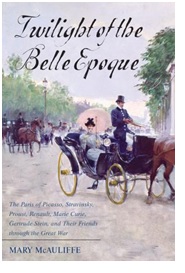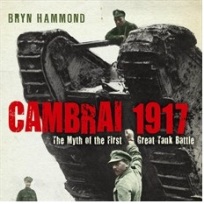Early Extract from: ‘Connections’ (NYP)
Michael’s return journey to the front line was slow and erratic, in dramatic contrast to the movements of the front he had left some two weeks previously.
He found himself, with others, taking almost three weeks to reach Locon (France) at the beginning of November. The officers were mostly transferring from their previous regiments to fill the gaps in the 1st and 2nd battalions of the Bedfordshires.
On 6th November the men of the 1st Battalion marched into Locon and were incredulous at the sight of 500 London buses and their drivers. Two days earlier the buses had been in London where they had been requisitioned. The bus drivers in London had all volunteered to remain with their buses and had driven in long, timeless convoy to connect with the army near Loker (Belgium).
Some three weeks earlier the 2nd Battalion had arrived in France from their barracks in South Africa and were moved by rail and foot towards Loker. Just outside Loker the two battalions met and had time to rest and mingle. Many of the soldiers were ‘old’ regulars and had been with the regiment for years, many starting as boys, subsequently there were old friendships between battalions. Over the years men and officers had met between postings at bases like Kempston so friendships amongst troops via commissions and transfers had naturally developed. In the middle of nowhere and in the rush and muddle of this new war it was a surprising but ideal time to search out old companions and in some cases, kin, to exchange cigarettes and stories. Food, rest and relaxation were to be grabbed when and where ever.
Re-embarking on the buses, 2nd battalion was joined by the 1st. and the column moved north making its way via Lestrem, Le Donilieu and on. But not far.
Along the Menin Road, via Hooge, just time for a rest then to march towards Geluveld. The end of a long day. The end of a brief respite from the immediacy of war and off into the Klein Zillebeke wood and a dark hell. From 6th November through to the 19th there was almost continuous fighting in the woods. The Bedfordshires initially took up a defensive line amongst the trees, preparing positions against the continual threat of German attack and actual sporadic bombardment and sniper fire. The English and French troops were not alone in working defensive positions, the Germans were preparing just as hard in mirror image on the other side of the wood. Each side were digging pits and trenches on point, forward or defensive lines. Nights brought little sleep for lookouts, scouting parties or those huddling in the trenches with permission to rest. No fires in the open, little to eat, no respite and no relief. Only defence and persistent danger of wounding or death. The dense trees gave them cover but the trenches were often difficult to dig, lines were bent and shortened by clumps of trees too close to dig through or just too big to go round. So digging would stop and another pit started in order to cover the line beside or behind. The expectation was to excavate to the depth of a man to stand and fire, or peer over a rampart made from the moved earth rammed down or bagged (if able). Roots from the spreading trees made it impossibly hard work. Some could be cut out or maybe worked round. Like demon archaeologists they would dig round or under or hack away with axes or bayonets to clear out what they could. Stopping and starting, straight or curved, the front and support trenches began to weave through the forest, edging forward like morse code laid on the ground but hidden by the trees and remaining leaves from the buzzing, dangerous, ‘flies’ that flitted through the broken skies. They were as deep as graves and shallow as pits, waiting for the storm and hail. Trees cracked and shuddered all around as all through the forest came sound and deeds of war.
Shelling was like an inconsistent tide that moved in and over from different directions as the warring fronts washed round the clumps of frantic workers. Advancing German troops, albeit some distance away would shift the balance in these local trenches. Again, like an incoming tide, the British line of defensive trenches, really only shallow pits, might at one hour be a front, a stable hinge that slaughtered advancing Prussian guards with one, rescued machine gun, or part of a lost flank that withdrew 30 metres to another defensive line. Forward and back. Both forces thinned by death and wounding. Time and again the British infantry would defend the line by retaking a lost trench with bayonet charge or defend against opposing bayonets with shot, bayonet or even fist. And the fighting got harder, trench to trench, yard by yard. The lie of the land in the forest meant it was easy to got lost, difficult to see the trench ahead or behind. It was difficult to tell who was friend or foe as movement was fast and deadly through day and black of night. Many died, many were wounded and some got lost in the melees to walk, creep or crawl into enemy lines, of whichever side and out again, or not.
This part was but a small element of the 1st Battle of Ypres. A period from 30th October through to 22nd November that saw the 1st and 2nd Bedfordshire starting with their depleted, combined, strength of 1100 men and officers move to the new front. By the end of November, when the defensive lines began to deepen and hold and the tactical movement lessened, both friend and foe were literally worn down by constant battle. Attack and counter, both sides running out of replacement troops and shells and resources. By the end of November that original 1100 had been whittled down drastically, the able number, some maybe wounded but still unwilling to leave the field, was 2 officers, 5 NCOs and 200men.
Men were exhausted and filthy and had witnessed each day more than they had seen in previous years of being regular soldiers. As battalions, as a regiment, part of the divisions of the British Expeditionary Force, they had fought, marched and fought again and again since arriving in Belgium at the beginning of August. In three months the BEF had received 86,000 casualties and had fought to a standstill. The Old Contemptables were born across the face of France and Belgium.
Michael might have been considered lucky, he was only lightly wounded, a bullet in the thigh and broken leg as he fell into a trench.
Michael, wounded in right thigh and other leg broken, was hoisted out of the pit and onto a stretcher, still conscious and swearing. He felt the hand of his sergeant on his shoulder, steadying him and the stretcher as they manoeuvred down the slope away from most of the immediate danger.
“Thanks Henry”, He managed to gasp towards the sergeant crawling beside him as his stretcher was dragged off the sightline
The two soldiers who had tended him in the soft mud at the bottom of the trench and helped lift him out slid rapidly over the top, hugging the ground to limit their profile. They said he was lucky, he said, ‘like hell’. They discovered the wound was bloody but not an artery, though his other leg was broken. Twice lucky, for had the trench been full depth he could have broken his neck too. Third time lucky, as the three men who had been just before him on the bank had been felled by a burst from a nearby machine gun just as his sergeant had thrown himself into Michael and knocked him down with such force that he rolled into the trench. He never felt the bullet but felt and heard the crack of the left shin bone as it crashed on to the unforgiving tree root with excess force and left him breathless and temporarily legless.
He had listened to the noise, yells and screams from the base of the trench, unable to distinguish events. Had shivered in the cold of the night. The cold slipped into his core as the warm blood pushed out of his thigh, twisted down and stuck his long-johns to his leg. It was minutes but seemed endless before two men jumped down beside him. He was sure his heart stopped with the shock and panic but the the air was dragged into his lungs as he heard the questioning English voices and he had shouted back, “ I’m okay but my legs are done in.”
They carried him to the the medical station and joined the shuffling queues of wounded and dying. He tried to insist he stayed but the medic sent him down the line. Michael knew the situation in the woods was critical, vital to hold and secure but it was chaotically fluid and he was immobile, useless. Michael also realised he was getting light-headed so he had gripped the edge of the stretcher to hang on as they moved him away from the madness.
To medical station, to base, to hospital and home in time for Christmas 1914.

Bibliography:
Many internet sites, 3 listed below.
www.firstww.com
www.great war.com.co.uk
www. history learning site
title: 1st Bedfordshires in World War 1 by Simon Fuller pub: Fighting Highs
 A bold plan but required if I want to finish this short epic and a third that is fermenting gently. Once again its on a set of characters from ‘A Certain Trace’…….. Hence my thoughts about nailing these novellas together; resulting not so much in a daisy-chain novel as a dog-eared-daisy-of-an-epic-novel……
A bold plan but required if I want to finish this short epic and a third that is fermenting gently. Once again its on a set of characters from ‘A Certain Trace’…….. Hence my thoughts about nailing these novellas together; resulting not so much in a daisy-chain novel as a dog-eared-daisy-of-an-epic-novel……



